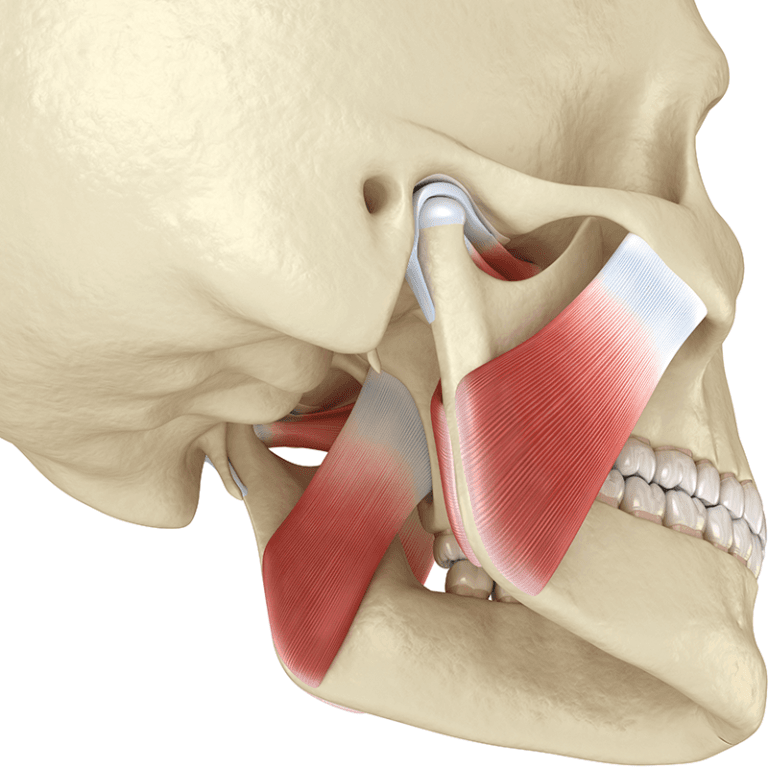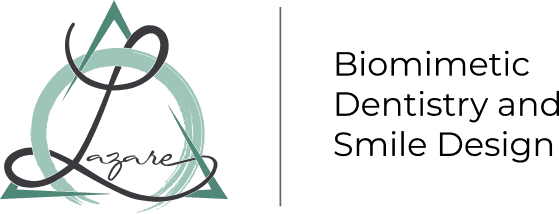
TMJ Disorder Treatment in New York City
Serving Midtown East, Upper East Side & Surrounding Areas
Causes of TMJ Disorder (TMD)
TMD can occur after trauma to the jaw, local cartilage disk dislocation, or damage to the cartilage from arthritis or other connective tissue diseases. Other patients have bite misalignment due to a lack of dental and orthodontic intervention, or interference from restorations that do not fit properly in the mouth and cause the muscles to move abnormally. The most common TMJ disorder is bruxism — stress-induced clenching or grinding of the teeth during sleep, which creates dysfunction in the lower jaw. The force exerted on the teeth can range from 50-160 lbs., and sometimes well beyond (the most ever measured was 975 lbs.), often resulting in significant structural problems. In fact, under stress, the limbic system can increase the maximum force exerted up to six times.
Call (332) 334-8290 or contact us online today to learn more about TMJ disorder treatment in New York City.
The Temporomandibular Joint

The temporomandibular joint (TMJ) is an anatomical feature found in both sides of the lower jaw.
The TMJ connects the jawbone to the skull at a socket, and the jaw muscles allow the mouth to function like a sliding hinge, opening and closing to allow different movements. There are multiple components to this area of the jaw, and if any part of the TMJ is not working correctly, dysfunction can occur.
People with TMJ disorder (also called TMD for temporomandibular disorder) experience pain of the joint and surrounding muscles.
Once joint alignment is compromised, sufferers may experience chronic pain and discomfort, as the temporomandibular joint is the most frequently used joint in the human body.
Symptoms of TMJ Disorder
There are specific side effects that occur as a result of TMJ disorder. While some are under the impression that noises produced by the jaw, like popping, clicking, or grinding sounds are an issue, this is actually very common. When these noises are accompanied by pain, discomfort, or limited movements of the jaw, there may be problems with the temporomandibular joint. When the TMJ is not functioning properly, people may notice pain in one or both side of the jaw joint when at rest or chewing, stiff jaw muscles, or earaches. In some cases, patients even experience lockjaw. Sometimes, the issue creates pain in the face and neck, or earaches that may at first seem unrelated. Headaches that occur in the morning may also be the result of TMD. Aside from pain, sufferers of TMJ disorder may also notice that their bite has changed, and the teeth no longer fit together as they once did.
Diagnosing TMJ Disorder and Irregularities of the Jaw Joint
Along with physical symptoms, Dr. Lazare can assess a patient for TMJ disorder with a thorough evaluation. He may view and feel the area, noting any signs of inflammation that could be attributed to improper function of the lower jaw. He may also determine if there is regular movement of the jaw in each direction — forward, back, up, down, and side-to-side. If these movements are accompanied by sounds, Dr. Lazare can hear them during the exam. Sometimes, X-rays or other imaging is a necessary step in diagnosing TMJ disorder.
Candidates for TMJ Disorder Therapies
Patients interested in treatments for their TMJ disorder can schedule an appointment to meet with Dr. Lazare to discuss their symptoms and learn more about treatment options. Dr. Lazare will collect and review a full medical and dental history and perform an examination to determine the source of discomfort. Dr. Lazare may also capture x-rays or other types of images to better understand jaw function and any underlying issues. The best candidates for TMJ disorder treatment are those who are willing to try more conservative approaches, and agree to follow at-home regimens, such as the daily use of a night guard.
Treating TMJ Issues
Once Dr. Lazare has properly diagnosed the issue as a TMJ disorder, patients have a number of treatment options available to eliminate pain, restore proper jaw function, and eliminate future disorder of the temporomandibular joint.
Most cases of TMJ disorders can be treated conservatively and successfully. The first step is to eliminate the pain and muscle spasms. In mild cases, such as yours, this can be done with moist heat packs, a non-chewy diet, and muscle relaxants (if necessary).
The next step would be to try and become aware of the potential sources of stress and tension that could lead to clenching and grinding. A device that may work well for you is a corrective bite plate, that will help to relax the muscles, thus preventing headaches, pain, and spasm. Selective filing of an uneven bite to correct the “high” spots is a final attempt to treat TMJ conservatively, because the removal of tooth structure is an irreversible process.
In a small percent of patients, surgery may be the final and most appropriate treatment option.
Dental Night Guards in New YOrk City
A dental night guard is a multipurpose solution to dental problems. The first step in treating TMJ disorder is for Dr. Lazare to create a custom-fitting night guard, also called an occlusal splint or a bite guard. This is used to prevent the impacted and patterned movement of the teeth during sleep. While some patients may also grind their teeth during the day, they usually notice this habit and can stop it from occurring. When sleeping, it is not possible to monitor jaw movements.
Tooth grinding causes wear and tear on both the temporomandibular joint and the teeth. Chronic movement affects many aspects of dental health. A muscle relaxation appliance helps prevent enamel wear and associated discoloration, as well as cracked or broken teeth that can cause sensitivity and pain.
A night guard doubles as a protective retainer. In orthodontic patients who have undergone Invisalign treatment and wish to maintain their results, a night guard can serve as a retainer if the material is hard. This preserves the new bite created by the Invisalign aligners and protects the teeth against any unintentional damage. In these cases, upper and lower retainers may be created. Most patients fitted for mouth guards will wear the protective dental piece on the upper teeth only, or in fewer cases, the lower teeth only.
Medication
While over-the-counter pain medications can offer temporary relief of the symptoms caused by TMD, they will not prevent harmful future movements of the jaw. Nonsurgical medical intervention may be more appropriate and can consist of muscle relaxers or steroid injections to control inflammation in the joint. If arthritis or other diseases cause jaw problems, these medical issues should be addressed with medication and other therapies. Jaw exercise may also help when paired with other treatments.
Invisalign
A misaligned bite can cause or exacerbate TMD but can easily be treated with Invisalign. These discreet dental braces are fitted over the teeth in a series of trays to gradually shift the teeth into the desired position. During treatment, the bite is redesigned so the upper and lower jaws fit together correctly.
Invisalign can successfully correct issues like crowding, tooth rotation, and gaps between the teeth. When the teeth are realigned, the TMJ can also move back into its proper position. The newly aligned jaws will typically function far better in their correct locations.
Dental Work
Another approach to treating TMD is through dental procedures, since the shape of the teeth and how they fit together directly affects the jaw structure. In patients with teeth that do not properly align and create uneven wear in the jaw, Dr. Lazare may be able to restore normal function by adding tooth bonding or indirect restorations or removing interferences from the teeth. These treatments reshape the teeth for a better overall fit of the jaws and permitting more normal function.
At-Home Treatments
Some people find relief from their TMJ disorder symptoms by using thermal therapies. A hot or cold compress can relax area muscles while combatting inflammation. Dr. Lazare may advise his patients to perform different facial exercises or limit the movement of the jaw to control pain. Patients can prevent additional wear of the jaw by eating softer foods and refraining from chewing gum or their fingernails.
Alternative Treatments
Alternative TMD treatments may include acupuncture, acupressure, and chiropractic and herbal solutions. These can also serve as an adjunct to traditional therapies, and in addition to night guard use.
Treating Stress
Because stress is a main factor in nighttime jaw activity that leads to TMD, Dr. Lazare may also suggest ways to reduce mental tension. Common ways to calm the mind are exercise and meditation. Patients may also benefit from treatment with a mental health professional if they are unable to alleviate their TMJ disorder symptoms through other types of self-care.
Contact the office at (332) 334-8290 to learn more about night guards and other TMJ disorder treatments in NYC.

Frequent TMJ Issues & Nightguards Questions
-
What Should You Do if Your Jaw Starts Making a Popping Sound When You Open It?If you are among the millions of people who have been diagnosed with TMJ syndrome, these may be among the symptoms. The TMJ (temporomandibular joint) is a joint that attaches the lower jaw to your skull. The symptoms described may be a result of the TMJ not functioning properly, due to one or more of the following having been adversely affected: your chewing muscles, joints, ligaments or surrounding bones.
-
Is TMJ Disorder a Condition That Will Last Forever?While Dr. Lazare can successfully manage TMJ disorders, he must first diagnose the cause of joint issues. In cases of situational stress, tooth grinding and jaw clenching may subside when the stressful event ends, or the patient is able to manage difficulties in their life. When a connective tissue disease or arthritis causes dysfunction in the joint of the lower jaw, the condition may be chronic until the disease is controlled. Most patients will not experience TMJ disorder (or at least its negative effects) long term.
-
Why Is a Night Guard the First Method of Treating TMJ Disorder?While there are more invasive methods available, Dr. Lazare typically suggests beginning TMD treatments conservatively with the use of a night guard. The guard can provide clues as to the patient’s nighttime jaw movements, and will alleviate pain associated with the hard pressure placed on the teeth by acting as a buffer. In many cases, the use of a night guard is sufficient in treating TMD. The added benefit is that a night guard made of a hard material will also keep the teeth in proper alignment, serving as a nighttime retainer.
-
Is My Headache Related to a TMJ Disorder?It is difficult to pinpoint the exact cause of one’s TMJ syndrome, although it is often related to stress. It also may be the result of a traumatic accident or a disease such as arthritis.
-
What Is the Main Cause of TMJ?Stress is the most common factor behind TMD, and should be treated alongside the physical symptoms of the joint issues. Mental stress can manifest as physical symptoms, even if we are not conscious of it. Some people enduring a stressful event may notice short term TMJ disorder, while those with issues like anxiety or chronic stress may find that problems like bruxism are ongoing.
A common consequence of stress are clenching and grinding, which can tire and strain the chewing muscles, causing them to go into spasm and cause pain. An improper bite can also result in TMJ dysfunction. Among the symptoms are: headaches (usually upon awakening), tenderness or fatigue of the jaw muscles, earaches, and pain or difficulty when chewing, yawning or opening wide. Clicking or popping sounds are very common signs, and in some extreme cases, the jaw can actually get stuck in the open or closed position. -
Can TMJ Disorder Be Cured?Most cases of TMJ disorders can be treated conservatively and successfully. Only a small number of cases require surgical correction, usually with those individuals who have suffered a traumatic injury. The first step is to eliminate the pain and muscle spasms. In mild cases, this can be done with moist heat packs, a non-chewy diet, and muscle relaxants (if necessary). It is also important not to try to test the degree of pain by opening and closing, but rather try to rest the TMJ and give it time to heal. The next step would be to try and become aware of the potential sources of stress and tension that could lead to clenching and grinding. A conservative therapeutic device that may work well for you is a corrective bite plate (made by your dentist), that will help to relax the muscles, thus preventing headaches, pain and spasm.
Selective filing of an uneven bite to correct the “high” spots is a final attempt to treat TMJ conservatively, because the removal of tooth structure is an irreversible process.
-
Friendly reception always makes a first impression on me. The location is right off of Park Avenue 14th and had a really cool view of the city. The office was clean and modern, all things needed for a perfect visit.
- Thomas
to Get Started? Call Us at 332-334-8290 or Schedule Your Next Visit
-
Monday: 8am - 5pm
-
Tuesday: 8am - 5pm
-
Wednesday: 10am - 7pm
-
Thursday: 8am - 5pm
-
Friday: 8am - 5pm
-
Saturday: 9am - 6pm
-
Sunday: Closed

